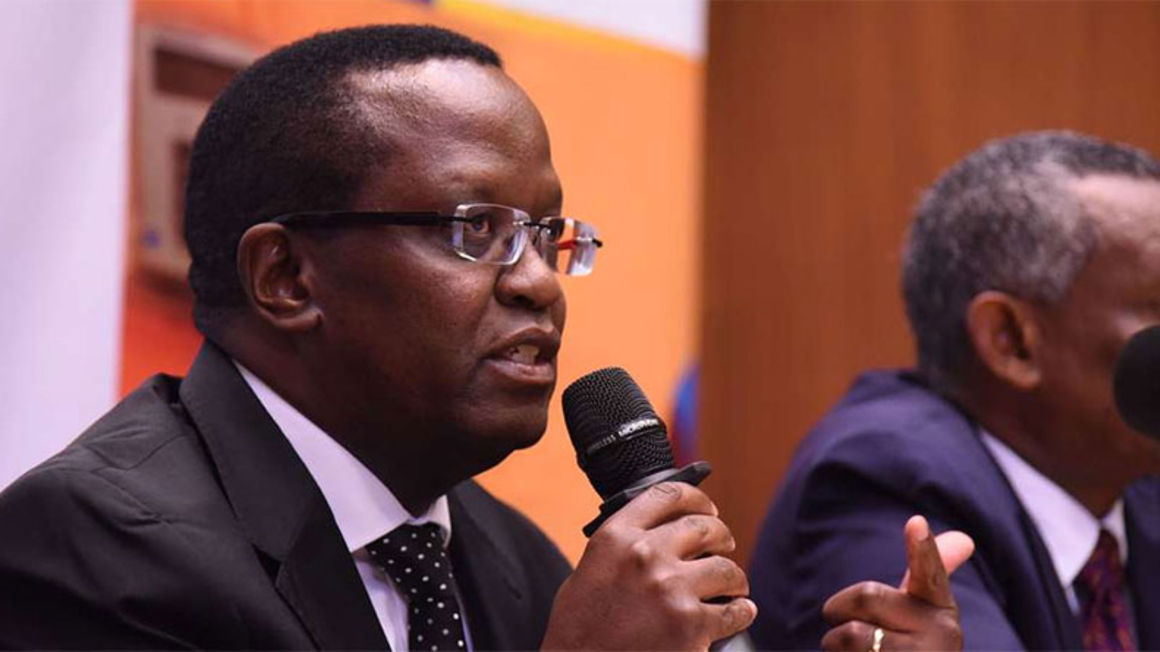
Kenya Power chief executive Bernard Ngugi. FILE PHOTO | NMG
Summary
- The Office of the Auditor-General says in its report on the power generator’s financial statements that the debt had increased from Sh19.3 billion a year earlier.
- Kenya Power, the distributor, swung into a pre-tax loss of Sh7.04 billion for its financial year to the end of last June on costly wholesale electricity purchase from the electricity producer and higher financing costs that offset modest sales.
- This has made the firm struggle to meet its obligations, in a business setting that has seen it seek debt relief in the race to cut costs.
Kenya Power defaulted on payment for electricity worth Sh23.9 billion supplied by KenGen
in the year ended June 2020, exposing the electricity producer to the risk of major losses.
The Office of the Auditor-General says in its report on the power generator’s financial statements that the debt had increased from Sh19.3 billion a year earlier.
Kenya Power, the distributor, swung into a pre-tax loss of Sh7.04 billion for its financial year to the end of last June on costly wholesale electricity purchase from the electricity producer and higher financing costs that offset modest sales.
This has made the firm struggle to meet its obligations, in a business setting that has seen it seek debt relief in the race to cut costs.
“In addition, the amounts due from Kenya Power were on average outstanding for periods of 195 days, which was way above the 90-day credit cycle provided for in the agreement between the two companies,” the Auditor-General said in the report.
The delayed payment has hurt KenGen’s cash flows, prompting it to reduce capital expenditure and increase its borrowings. The company ended the review period with a cash balance of Sh5.3 billion, down 42.3 percent from Sh9.3 billion the year before.
Its net profit, however, more than doubled to Sh18.3 billion, partly helped by a Sh4.5 billion tax credit.
Other power producers are also claiming a total of Sh20.5 billion from Kenya Power and it was not immediately clear how much of the amount is in default.
The audit found differences between what KenGen is claiming from Kenya Power and what the electricity distributor says it owes the power producer.
While KenGen says it is owed Sh23.9 billion, Kenya Power says the debt stands at Sh24 billion, a variance of Sh44.7 million.
KenGen is also claiming from Kenya a separate Sh224.3 million for its Aggreko project – an emergency power plant it manages on behalf of the Ministry of Energy.
Kenya Power says it owes KenGen Sh197.6 million in relation to the Aggreko project, leaving Sh26.7 million in dispute.
A total of Sh71.4 million is contested, with the power producer saying the amount represents penalties for default.
“According to management, the unconfirmed amount of total trade receivables of Sh71.4 million relates to interest on delayed payments, which Kenya Power has disputed,” the audit report said.
The interest KenGen charged Kenya Power for the outstanding amounts is much smaller compared to the penalties levied in previous years.
The power producer, for instance, charged interest of Sh722.3 million in the year ended June 2019 when the electricity distributor had delayed payments amounting to Sh19.3 billion.
Kenya Power, meanwhile, is disputing the reduced penalties. The company’s default in the year ended June 2020 represents 70.2 percent of KenGen’s current assets.
The power producer has in the past written off Kenya Power debt running into hundreds of millions of shillings, representing up to 2.5 percent of the amounts owed.
The company’s internal policies show that it now faces the risk of major losses from the electricity distributor’s default that had stretched to 6.5 months against its 40-day window.
“There is a rebuttable assumption that the credit risk on a financial asset has increased significantly since initial recognition when contractual payments are more than 30 days past due,” KenGen says in its credit risk analysis.
“For this purpose, default is defined as having occurred if the debtor is in breach of contractual obligations, or if information is available internally or externally that suggests that the debtor is unlikely to be able to meet its obligations.”
The Auditor-General, commenting separately on Kenya Power’s financial statements for the year ended June 2020, says the risk of the company becoming insolvent has increased over the years.
Its short-term liabilities in the review period stood at Sh117.4 billion, surpassing its current assets of Sh74.8 billion by Sh42.6 billion.
“The company has reported negative working capital position for the fourth consecutive year. As disclosed by the board and management in the past and current financial statements, strategic initiatives have been undertaken to improve the financial results of the company,” the audit report said.
“However, these initiatives appear not to have yielded the intended results as at June 30, 20202. These conditions indicate that a material uncertainty exists, which may cast a significant doubt on the company’s ability to continue as a going concern.”
The government, which owns a 50 percent stake in the electricity distributor, has initiated a series of measures aimed at saving the company from bankruptcy.
The latest effort is the formation of a task force to review power purchase agreements (PPAs) signed between Kenya Power and all electricity generators with a goal of renegotiating the energy prices and other terms downwards.
Review of the PPAs comes after it emerged that Kenya Power hadsigned contracts committing it to take more electricity than it can sell, leaving it to pay onerous capacity charges to energy producers even when their plants are idle.
“The terms of reference of the task force shall be to … undertake a comprehensive review and analysis of the terms of PPAs entered into by the Kenya Power and Lighting Company Limited (KPLC),” said a gazette notice announcing the formation of the team.
“Review the take-or-pay approach applied under the PPA structure and recommend a viable pay-when-taken (merchant plant) approach, or any other viable payment structure, for use in independent power generation projects.”
The task force is also expected to review the allocation of risk between the independent power producers and the electricity distributor.
There will also be an audit of the operations of the power producers, with the government threatening to terminate the contracts of those found to have broken the country’s laws or taken advantage of Kenya Power.
Efforts to offer financial relief to the company include a moratorium for payment of principal and interest on government on-lent loans amounting to Sh5.7 billion million until July 2021 and waiver of any penalties arising from the deferment of these payments for a period of one year.
The government is also reviewing the firm’s existing commercial facilities with an aim of retiring expensive ones through engagement on favourable terms with international development financiers.
“The strategy of the company is to pursue restructuring of short-term commercial facilities (overdrafts) into medium-term facility,” Kenya Power said.


No comments:
Post a Comment